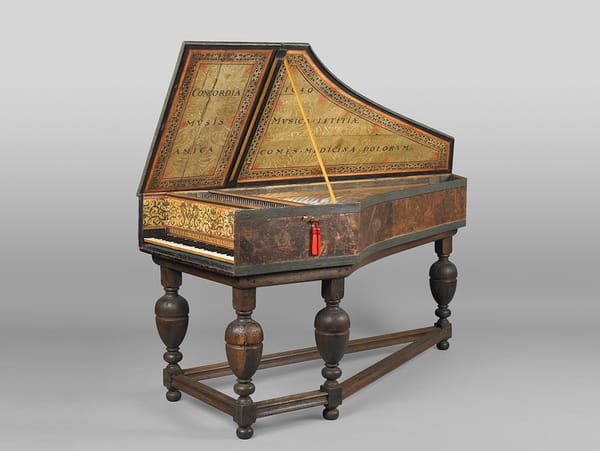Bach: Complete Lute Works on Guitar

The collection of music composed by Johann Sebastian Bach (1685-1750) commonly referred to as the “works for solo lute”, has been the subject of study and debate for centuries. The arguments have recently been focussed on whether or not Bach wrote these pieces for the lute, lautenwerk (a lute-harpsichord hybrid), or the harpsichord. The cycle is also part of the standard classical guitar repertoire, with abundant transcriptions widely available. Rather than making an argument in support of one plausible theory over another as to what instrument Bach might have had in mind for these pieces, the aim of this article is to simply introduce these brilliantly composed masterpieces in the hope that they might provide enriching and valuable listening experiences.
The seven movement Suite in G minor, BWV 995 was likely composed around 1730 and is Bach’s lute arrangement of his Cello Suite no. 5 in C Minor, BWV 1011. The lute version includes full harmonies, as well as contrapuntal lines that are not present in the cello version. It differs most significantly in the Très Viste fugue section of the prelude, Gavottes I & II, and in the Gigue. The Sarabande also bears a motivic relationship with Et Incarnatus Est from Bach’s Mass in B minor.
Likely the earliest piece in the collection, Suite in E Minor, BWV 996, is thought to have been composed around 1715. The six movements of the suite are composed in dense keyboard-like texture, further fueling the instrumentation debate. The Gigue, for example, requires considerable strategizing and effort in order to be playable on the lute or the guitar.
Bach’s Suite in C Minor, BWV 997 was possibly composed around 1740. Its five movements contain a number of motivic similarities to Bach’s other sacred choral works, such as the fugue subject mirroring Sei nun wieder zufrieden, meine Seele from Bach’s cantata BWV 21, as well as the relationship between the Sarabande and the final movement of St. Matthew’s Passion, BWV 244. These motivic connections, as well as those previously mentioned, suggest that the lute works may have been conceived not as secular instrumental works but rather have a spiritual origin.
Prelude, Fugue, and Allegro, BWV 998 was likely composed around 1743. Its three movements contain more examples of fully realized, keyboard-like counterpoint that at times nearly elude the capabilities of plucked strings and require careful pre-planning in order to be playable. Both BWV 997 and BWV 998 are also unique in that they contain Da capo fugues (a rare choice for Bach).
The flowing arpeggiations of the standalone Prelude in D Minor, BWV 999 give this piece the most lute-like texture in the cycle, which was likely composed around 1720. It resembles other idiomatic lute compositions of the time, but is also not dissimilar in style from preludes in Bach’s Well-Tempered Clavier.
Composed around 1723, Bach’s Fugue in G Minor, BWV 1000 is a lute transcription of the fugue movement from his Violin Sonata in G Minor, BWV 1001. The lute version includes the addition of of bass lines, as well as several slight motivic alterations throughout the movement, which may be the result of deliberate changes by Bach, or from copyist errors.
Bach’s Suite in E Major, BWV 1006a is a lute transcription of his Violin Partita in E Major, BWV 1006 and was likely composed around 1736. As is the case with BWV 995, and BWV 1000, this arrangement differs from the violin version through the addition of bass and contrapuntal lines. Bach first composed the prelude as the opening Sinfonia of his cantata: Wir danken dir, Gott, wir danken dir, BWV 29.
Unlike Bach’s cycles for unaccompanied cello or violin that were each composed over the course of just a few years, this collection is comprised of disparate works that were composed over a period of approximately three decades, demonstrating the stylistic transformations that he underwent throughout his life. The cycle encompasses a wide variety of compositional styles, and exemplifies Bach’s consummate compositional brilliance and mastery.






